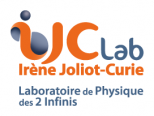En tant que chercheur au sein de l’équipe nucléaire de la division de théorie de l’IJCLab, mon travail est consacré à faire progresser la compréhension des réactions nucléaires grâce à l’utilisation de méthodes ab initio. Notre collaboration de longue date et reconnue à l’international se concentre sur la modélisation des réactions nucléaires à partir de l’interaction la plus fondamentale entre neutrons et protons. Au cours de la dernière décade, nous avons été à l’avant-garde de l’application du paradigme ab initio au domaine de la théorie des réactions nucléaires.
Notre équipe a développé une approche computationnelle unique qui se distingue par sa capacité à décrire les canaux impliquant des réactions binaires et ternaires entre des noyaux totalisant plus de quatre nucléons. Cela est réalisé en utilisant des protons et des neutrons constituants qui interagissent grâce à une interaction nucléaire dérivée de la théorie des champs effectifs chirale (EFT). Notre approche est sans égale dans le domaine et reflète la détermination de notre équipe à explorer les aspects les plus fondamentaux des réactions nucléaires. En reliant les propriétés des noyaux à la force forte via EFT, notre approche a le potentiel de révolutionner le domaine.
En plus de mon travail en théorie nucléaire, je suis particulièrement intéressé par les connexions interdisciplinaires et les technologies émergentes telles que les gaz ultra-froids d’atomes bosoniques ou fermioniques, les technologies d’apprentissage automatique et l’informatique quantique. Je suis activement impliqué dans l’exploration de l’utilisation de réseaux de neurones génératifs pour réaliser la prochaine avancée en théorie nucléaire.
La collaboration avec les expérimentateurs est également une partie essentielle de mon travail. Je travaille en étroite collaboration avec les expérimentateurs de mon laboratoire et dans des collaborations internationales à CERN, PSI ou GANIL pour soutenir l’interprétation et la prédiction des données nucléaires. Cela est particulièrement important dans le domaine de l’astrophysique nucléaire, où l’explosion de nouvelles données recueillies par les télescopes spatiaux révolutionne notre compréhension de l’univers. Comprendre les réactions nucléaires à basse énergie est crucial pour comprendre de nombreux signaux, histoires et objets tels que les étoiles dans le cosmos.
Dans l’ensemble, les efforts de notre équipe repoussent les limites de la théorie nucléaire et ont le potentiel de façonner l’avenir du domaine.
Thèmes de Recherche
- Réactions nucléaires et structure pour l’astrophysique et les noyaux exotiques dans le modèle ab initio No-Core Shell avec la méthode Continuum
- Interaction nucléaire à partir des premiers principes en utilisant la théorie des champs effectifs
- Comment dériver un champ moyen moderne à partir des premiers principes ?
- Les noyaux, un laboratoire quantique ouvert pour étudier l’émergence de l’universalité
Funding and support
| ANR JCJC Nectar | Notre objectif est d’étudier les propriétés d’annihilation des atomes antiprotoniques jusqu’aux premiers noyaux de halo, à partir des interactions entre nucléons et antinucléon-nucléon à l’aide de méthodes ab initio. |
| Fellowship des 2 infinis | Le but du projet de thèse est de développer des outils ab initio pour étudier l’émission de clusters 2p, la désintégration chargée, et de participer à l’effort de modélisation de l’émission retardée de particules bêta. |






